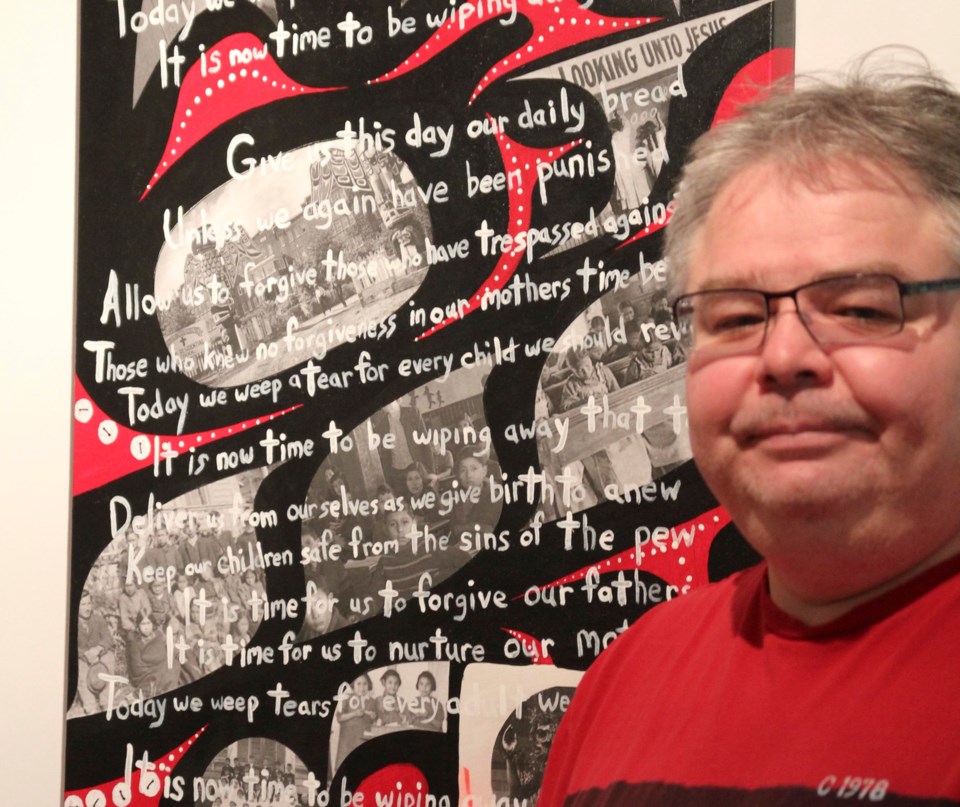Bowen Island-based artist Simon Windazi James says that for a long time, his Grandfather was the inspiration for everything he did: learning to dance, to sing, to carve, to paint and to man a salmon-fishing boat, for example. When James met his wife, she became his inspiration. When his son came into the world, he became another inspiration, and now his two year-old daughter also inspires his work. While helping to curate the upcoming art show, Authentically Aboriginal on Bowen, James’s inspiration seems to be yet again closely tied to the memory of his Grandfather
He recalls a story about his Grandfather from the early 1970s, who walked into a gallery in the US to find a host of his people’s artifacts (James is one of the kwakwaka’wakw people).
“He told the people running the gallery to open up the back door so that he might load them into a truck,” says James. “Of course, the gallery owners called the police, but my Grandfather was actually on his way to speak at the UN and had diplomatic immunity, so they couldn’t arrest him.”
James goes on to tell the story of the appropriation of his peoples art, culture and the theft of their belongings.
“Upon European contact, my people understood what was happening. We hid our treasures in caves,” says James. “Years later, we see that those caves were robbed, and our treasures can be found in archives and galleries around the world. We have no access to them. Also, the works found in most of the galleries selling aboriginal art in downtown Vancouver are not made aboriginal people. The art they sell is made by scholars who have learned from books, who have access to artifacts that I don’t have… but for me, and for the artists who will be displaying their work at this upcoming show, they all know their history and their culture, they do not need to read it in a book. With this exhibit on Bowen, I want to show that we are not simply an archival people.”
James says that in surveying the artists who he will be displaying their work at the upcoming exhibition, most have not worked with the downtown Vancouver galleries in roughly 5 – 7 years.
He adds that he gets calls on occasions from people who he knows are mass-producing items they are selling as “native art” asking if they can take photos of his work.
“I always say no,” says James. “This is taking advantage of aboriginal artists.”
With this, he says, making a living as an aboriginal artist has become increasingly challenging over the past decade. To feed his family, James works as a contractor and also for different school boards, but he says he always puts his work as an artist first.
He says he hopes that the upcoming exhibition will help to make this situation known to the general public. It is also why he says he agreed to the staging of a panel on cultural appropriation as a part of the exhibition.
“My father begged me not to do it,” says James. “He said I’d just be opening up a can of worms, but I told him we have been needing to have this conversation for the past 40 years. I am looking forward to seeing what comes out of it.”
James says his role in the creation of the panel, which will take place on May 17 at Cates Hill Chapel, is reflected in the presence of Lou-ann Neel, the creator of the Authentic Indigenous Arts Resurgence Campaign; and Shain Jackson, a former lawyer from the Sechelt Nation who is now working as an artist.



